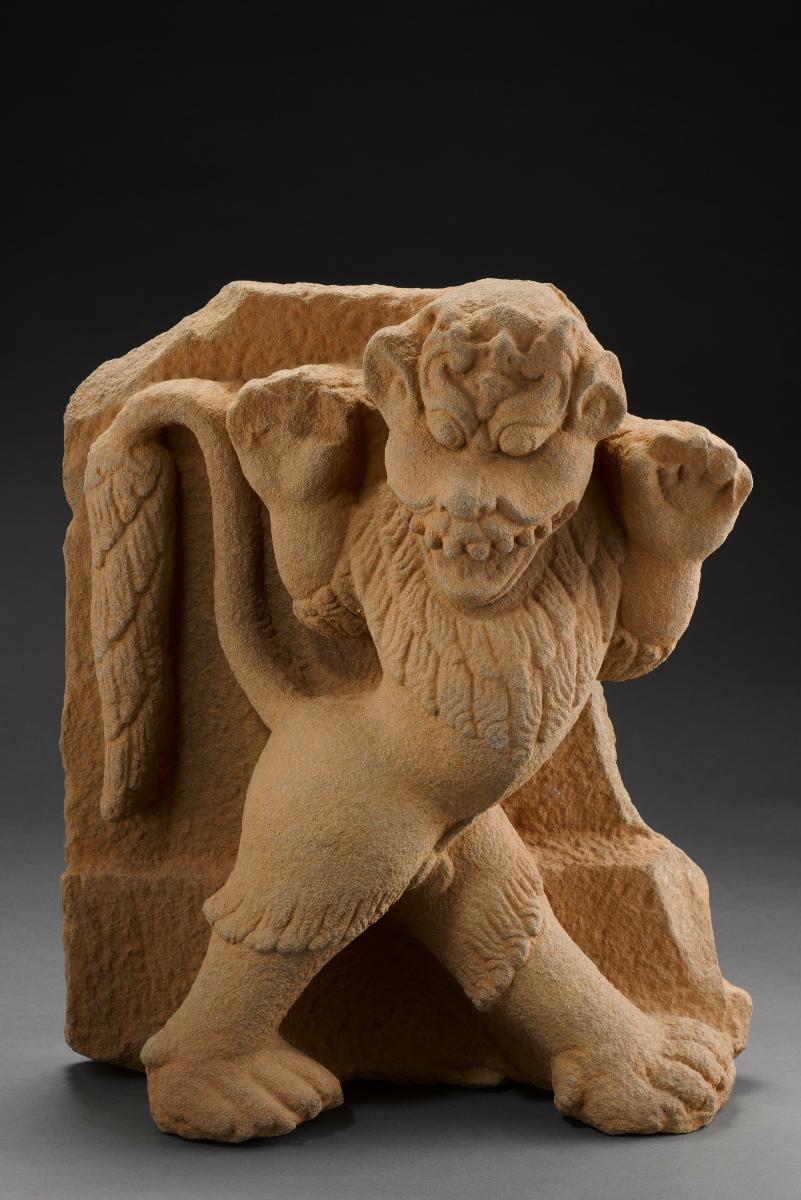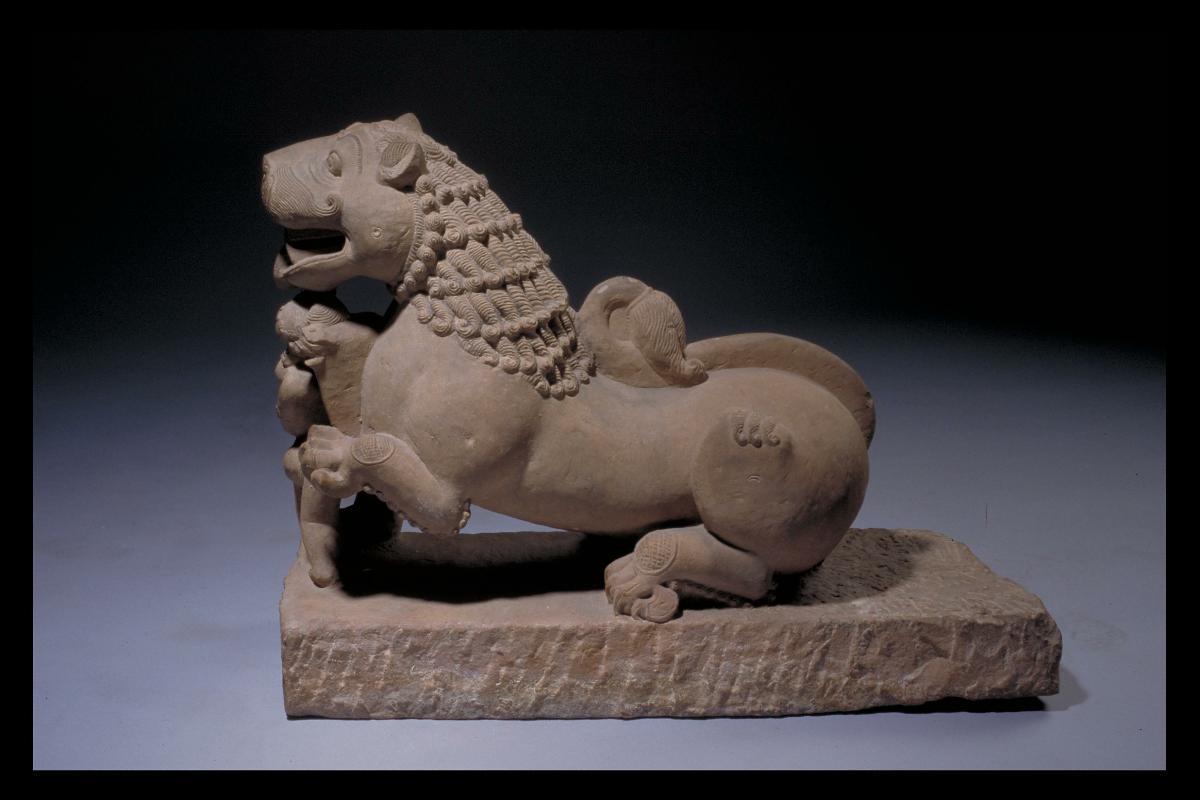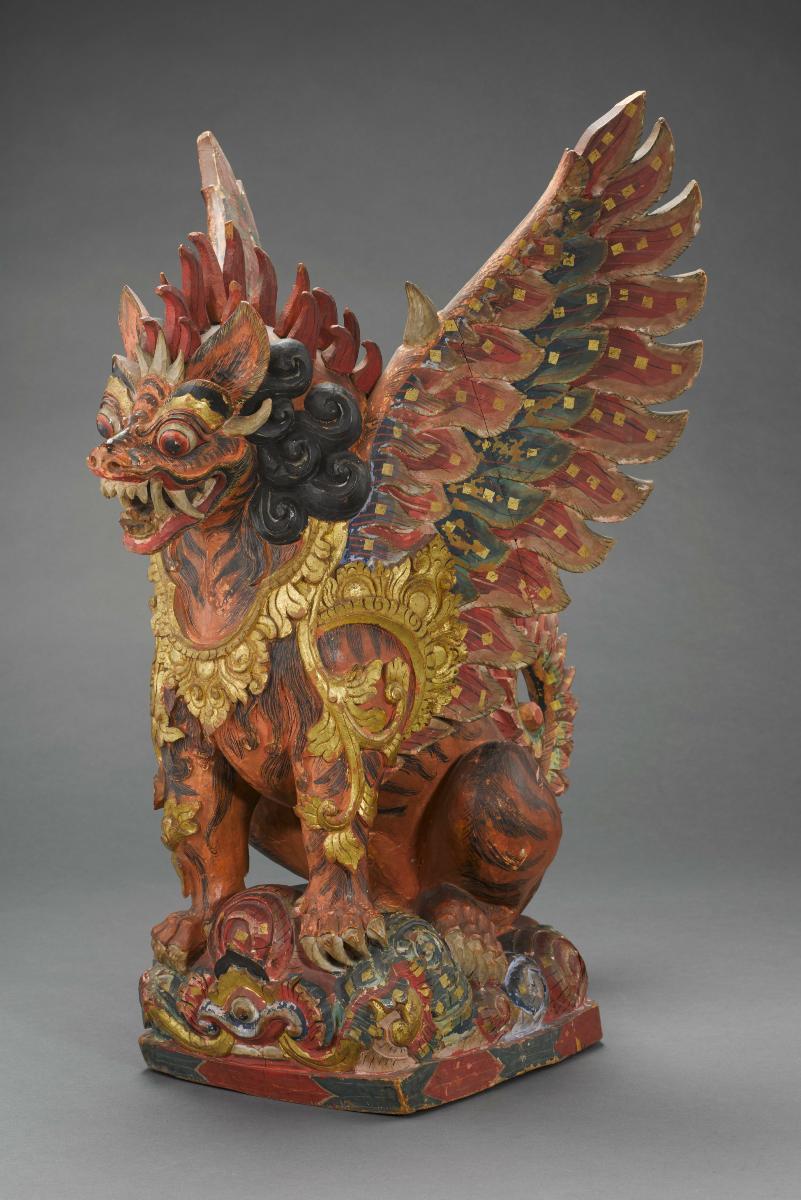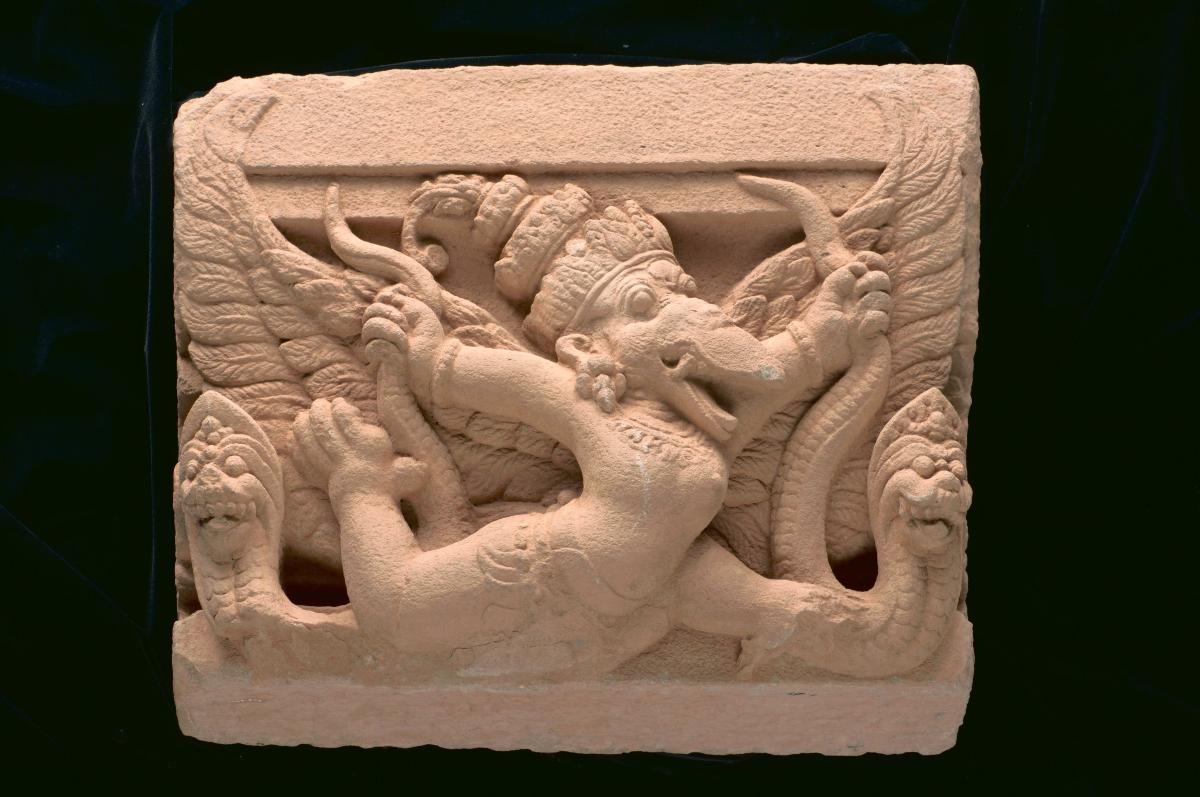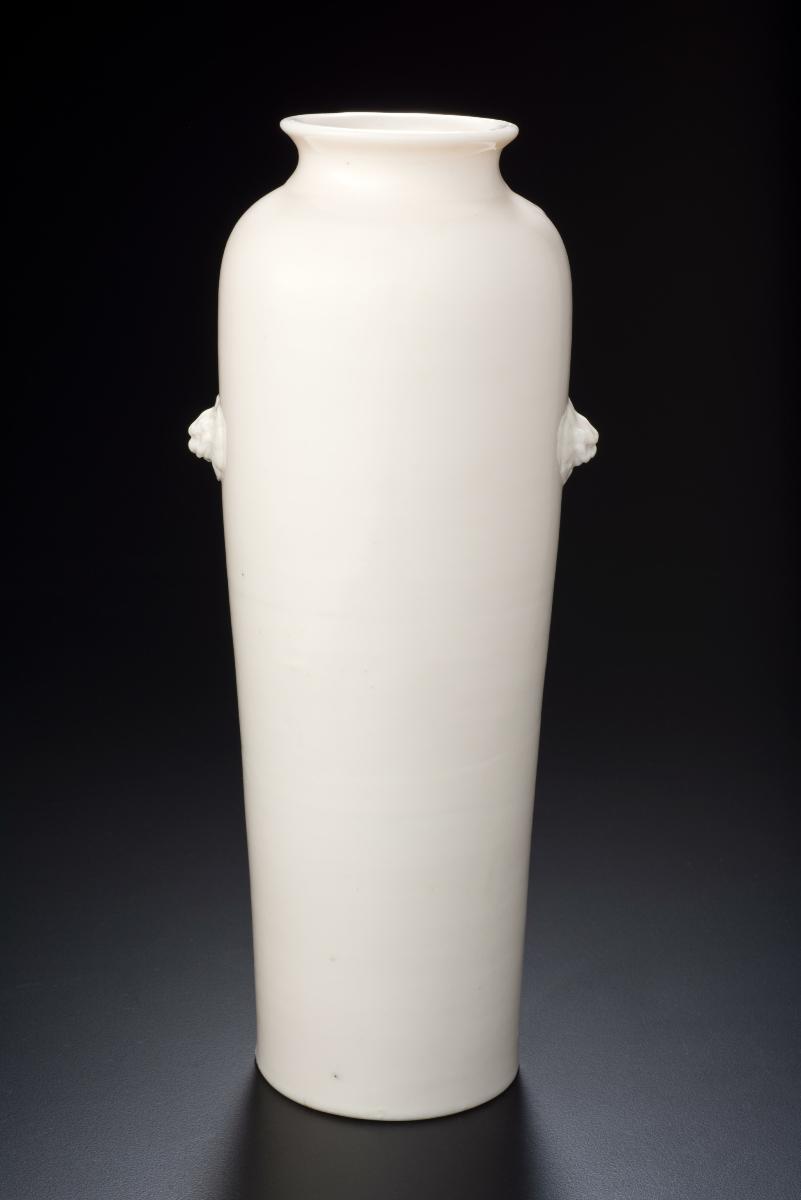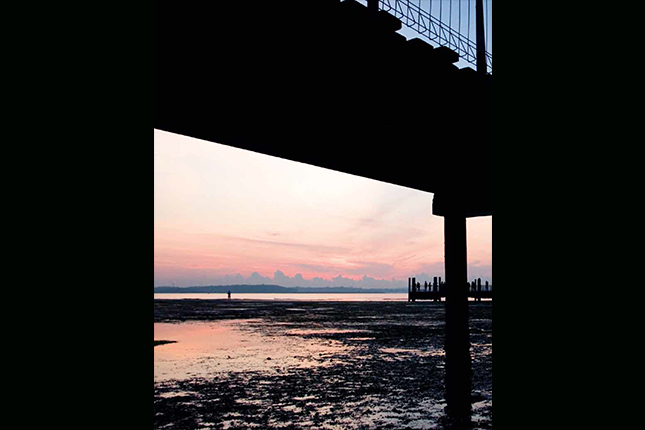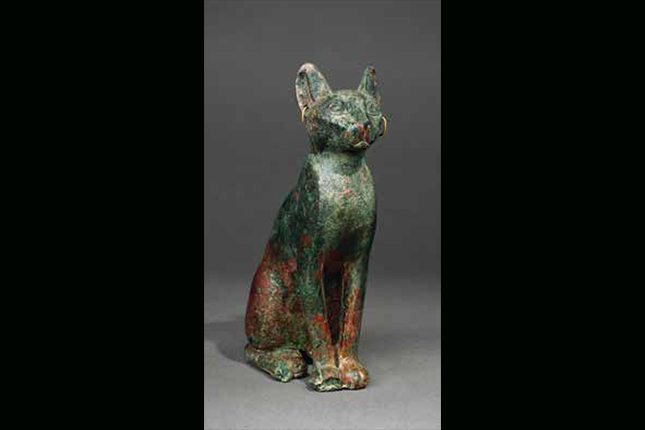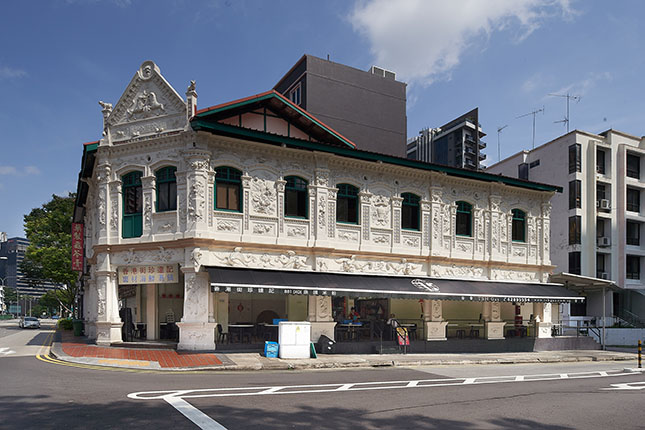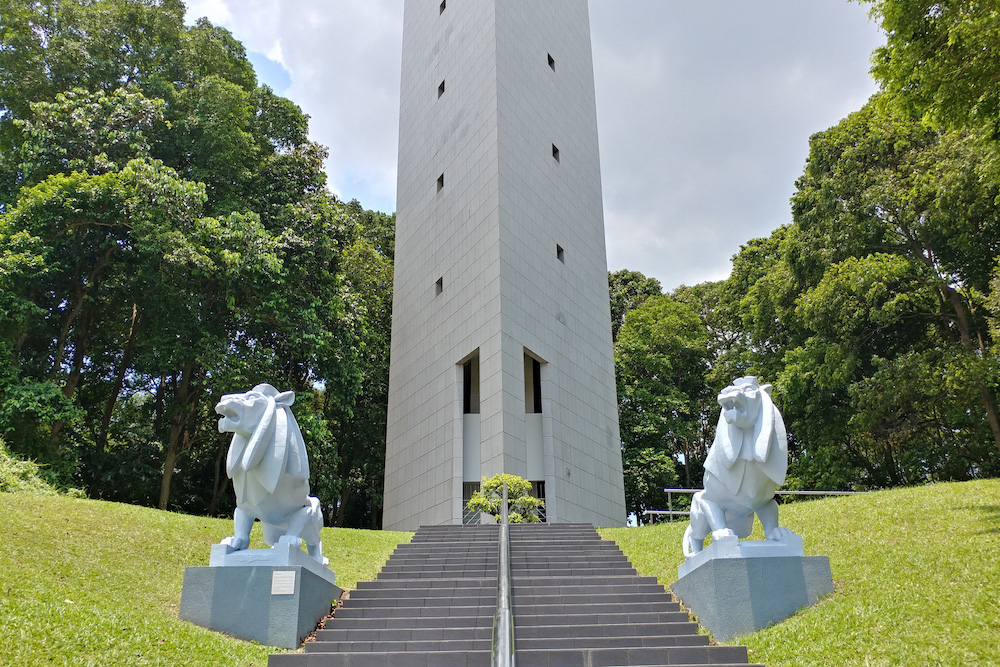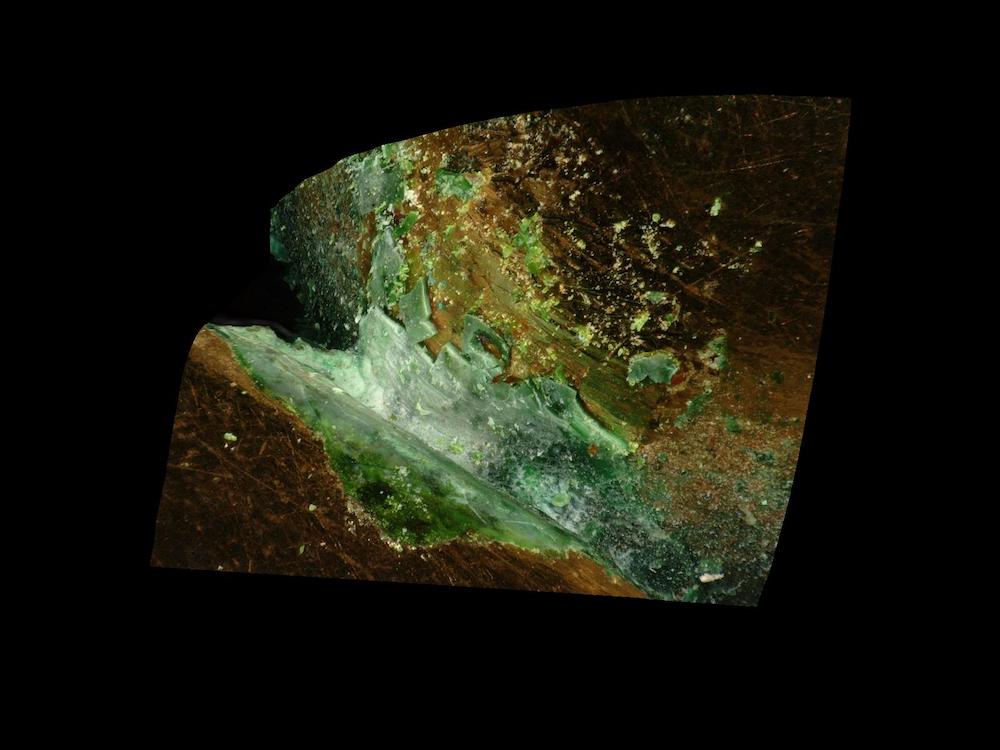This deeply carved sandstone relief features a rampant lion standing on its hind legs with teeth bared, typical of Cham lions of this period. It would probably have been positioned around the base of the temple walls as embellishment. Champa was one of the earliest regions in Southeast Asia to adapt Indian cultural influences as they had Hindu temples built as early as the late 4th century. Brick temples dedicated to royal ancestors, stone sculptures and precious metal images and jewellery, are amongst the important material legacy of Champa. Stylistic similarities with Indian, Chinese and regional traditions, are often seen, reflecting the exchanges that took place between Champa and these cultures.




